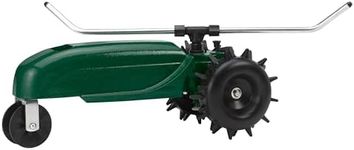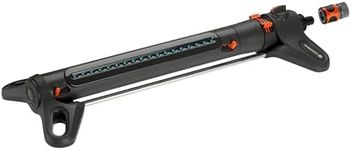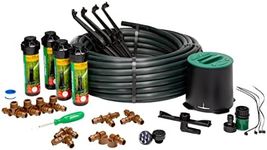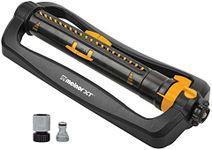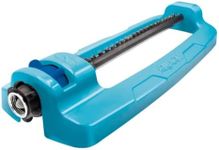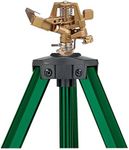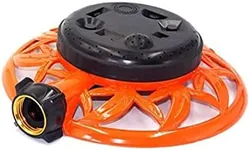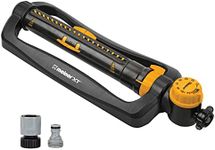Buying Guide for the Best Lawn Sprinklers
Choosing the right lawn sprinkler can make a big difference in how healthy and green your lawn looks, while also saving you time and water. The best sprinkler for you depends on the size and shape of your lawn, the type of grass or plants you have, and how much control you want over watering. Understanding the main features and how they relate to your needs will help you make a smart choice.Sprinkler TypeSprinkler type refers to the way the sprinkler distributes water across your lawn. The main types are oscillating, rotary, stationary, and traveling sprinklers. Oscillating sprinklers move back and forth and are good for rectangular areas. Rotary sprinklers spin and are better for circular or large areas. Stationary sprinklers stay in one place and are best for small patches. Traveling sprinklers move along a path and can cover large, irregular spaces. To pick the right type, consider the shape and size of your lawn and how much flexibility you need in coverage.
Coverage AreaCoverage area is the maximum space a sprinkler can water effectively, usually measured in square feet or meters. Some sprinklers are designed for small gardens, while others can handle large lawns. If your lawn is small, a sprinkler with a limited coverage area will be enough. For bigger lawns, look for models that can reach further or be adjusted to cover more ground. Always match the coverage area to your lawn size to avoid over- or under-watering.
Spray Pattern AdjustabilitySpray pattern adjustability means how much you can change the direction, width, and shape of the water spray. Some sprinklers let you adjust the spray to water only certain areas, which is useful if you have flower beds or walkways you want to avoid. Others have fixed patterns. If your lawn has an unusual shape or you want to avoid watering certain spots, look for a sprinkler with adjustable spray patterns.
Water Pressure RequirementsWater pressure requirements refer to how much water force the sprinkler needs to work properly. Some sprinklers need high water pressure to reach their maximum coverage, while others work well with low pressure. If your home has low water pressure, choose a sprinkler designed for that, or you may end up with uneven watering. Check your water pressure and compare it to the sprinkler's requirements to ensure good performance.
Durability and MaterialDurability and material describe what the sprinkler is made of and how well it can withstand outdoor conditions. Sprinklers are usually made from plastic, metal, or a combination. Metal sprinklers tend to last longer and handle rough use, while plastic ones are lighter and may be less expensive but can break more easily. If you plan to leave your sprinkler outside often or use it frequently, choose one made from sturdy materials.
Ease of Use and MaintenanceEase of use and maintenance covers how simple it is to set up, adjust, and clean the sprinkler. Some sprinklers are very straightforward, while others have more complex settings. If you want something you can set and forget, look for a model with simple controls and easy cleaning features. If you enjoy fine-tuning your watering, a more adjustable model might suit you. Think about how much time you want to spend on setup and upkeep.
